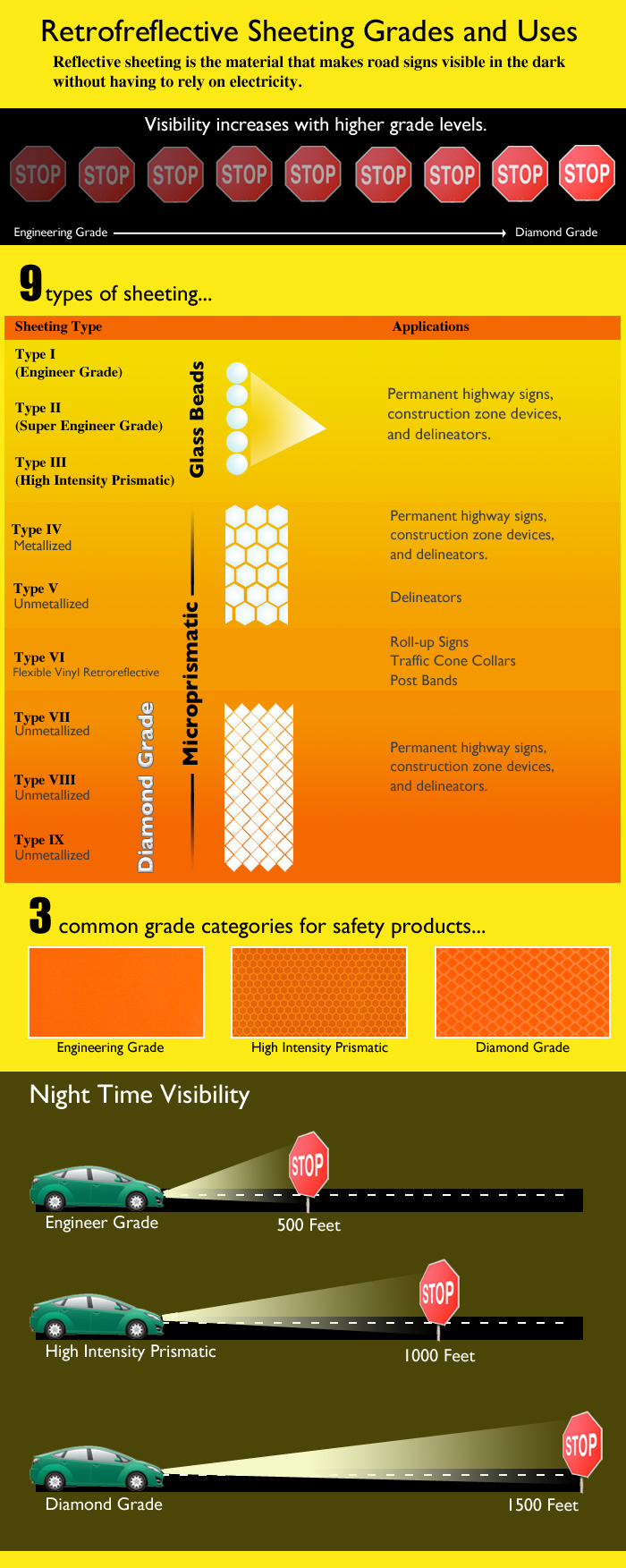Retroreflective Sheeting
Sheeting Grades and Uses
Presented by Traffic Safety Warehouse
Retroreflective Sheeting Transcript
Reflective sheeting is the material that makes road signs visible in the dark without having to rely on electricity.
Visibility increases with increasing grades of reflective sheeting with Diamond grade providing the most visibility for signs.
9 Types of Sheeting
- Type I – Engineer Grade, glass bead material, example use: high signs, construction zone devices and delineators
- Type II – Super Engineer Grade, glass bead material, example use: high signs, construction zone devices and delineators
- Type III – High Intensity Prismatic, glass bead material, example use: high signs, construction zone devices and delineators
- Type IV (metallized), microplasmatic material, example use: high signs, construction zone devices and delineators
- Type V (unmetallized), microplasmatic material, example use: delineators
- Type VI (Flexible Vinyl Retroreflective), flexible microplasmatic material, example use: roll-up signs, traffic cone collars, post bands
- Type VII (unmetallized), diamond grade, microplasmatic material, example use: high way signs, construction zone devices, delineators
- Type VIII(unmetallized), diamond grade, microplasmatic material, example use: high way signs, construction zone devices, delineators
- Type IX (unmetallized), diamond grade, microplasmatic material, example use: high way signs, construction zone devices, delineators
3 common grade categories for safety products:
Engineering Grade,High Intensity Prismatic and Diamond Grade
Night Time Visibility
Typical night time visibility measures:
Engineer Grade – about 500 feet
High Intensity Prismatic – about 1000 feet
Diamond Grade – about 1500 feet


